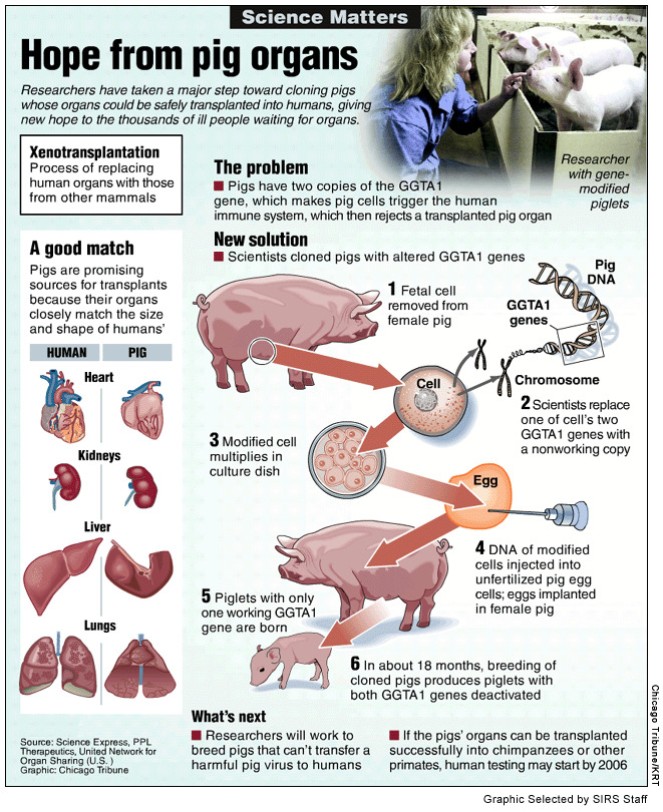Types of Xenotransplantation -Solid Organ: A procedure in which an animal organ, such as kidney or liver, is transplanted into a human. -Cell and Tissue: The transplantation of tissues and cells from an animal without surgical connection of any animal blood vessels to the recipient’s vessels. -Extracorporeal Perfusion: Occurs when human blood is circulated outside of the body through an animal organ, such as a liver or a kidney, or through a bioartificial organ produced by culturing animal cells on an artificial matrix. -Exposure to Living Animal-Derived Material: A procedure in which human bodily fluids, cells, tissues or organs are removed from the body, come into contact with animal cells, tissues or organs and are then placed back into a human patient.
|
||||
Immunologic Barriers of Xenotransplantation Xenograft Rejection
 |
||||